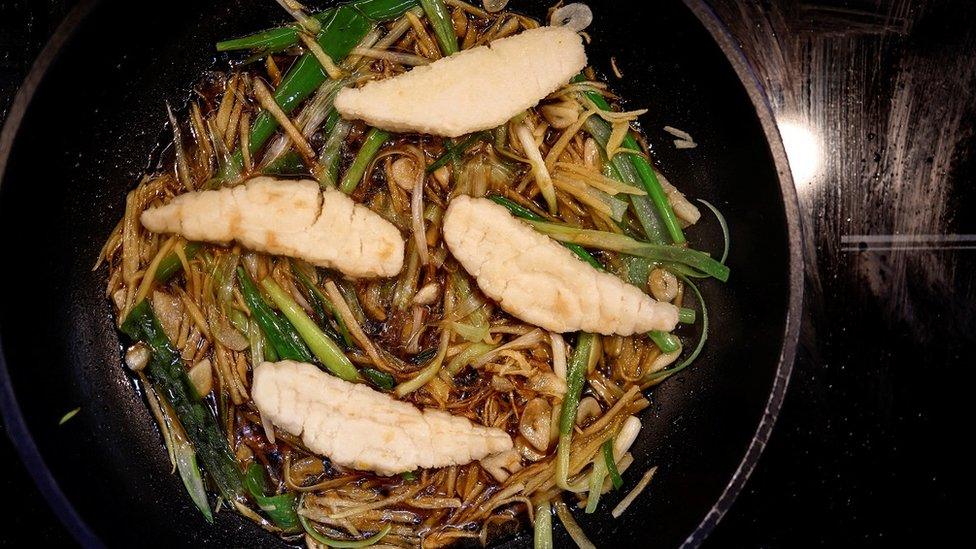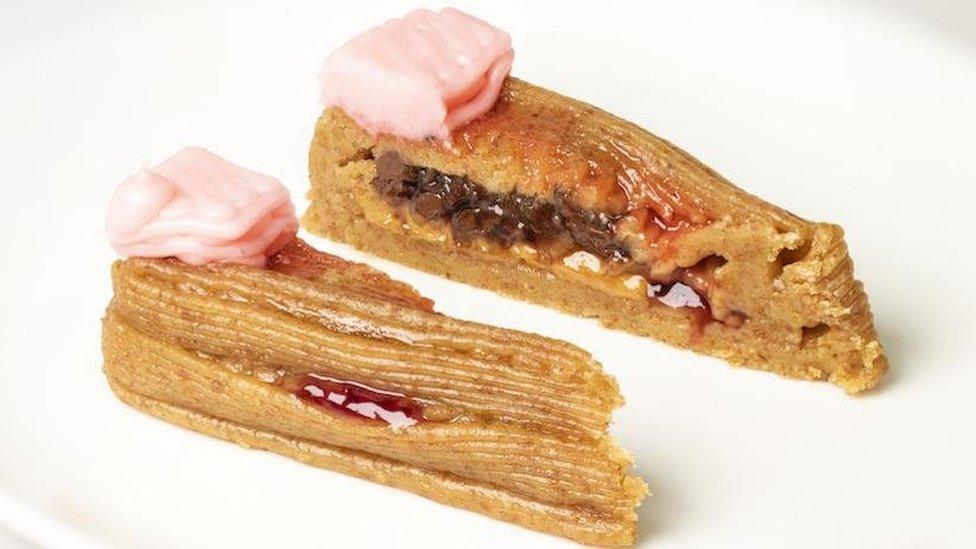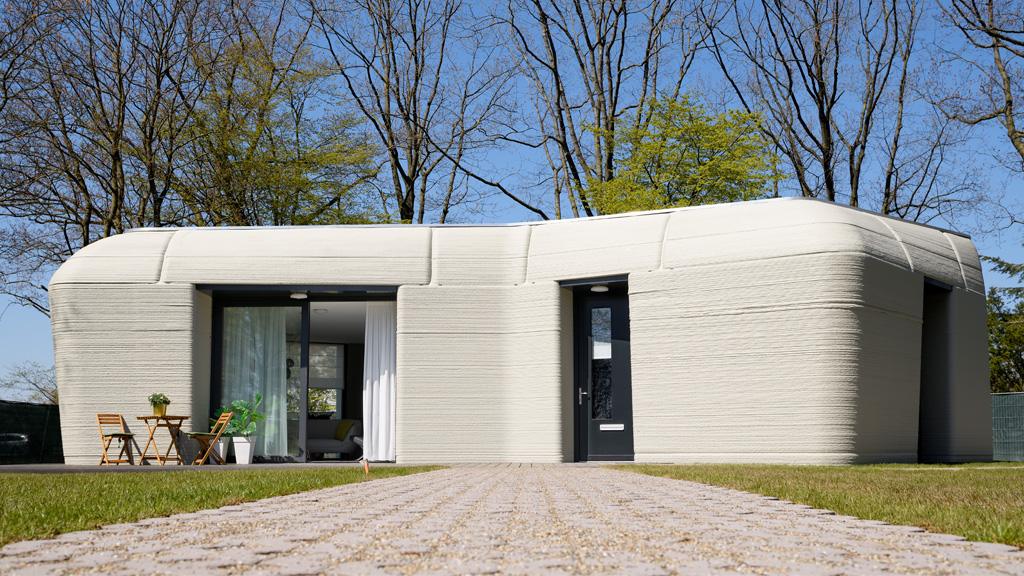3D printed food: Would you try it?
- Published
- comments

The fish fillet was created using grouper cells
What's your favourite takeaway of choice?
Lots of people might opt for fish and chips as their takeaway treat, with cod, haddock, plaice and pollock all popular fish choices.
However, a brand new type of fish could one day find itself on restaurant menus.
A food technology company based in Israel says it has managed to print the first ever ready-to-cook fish fillet.
Steakholder Foods, which has joined forces with Singapore-based company Umami Meats for its latest development, says it has used cells from a grouper fish, which are then grown into muscle and fat in a laboratory.
A 3D printer was used to create the fillet, with a sliding glass dish adding to its size with each pass.
It has the flakiness of traditional fish and the final outcome is a narrow fillet which, when fried and seasoned, mimics the properties of sea-caught fish.
We want to hear from you - would you give 3D printed food a go? Have your say in our vote and you can leave us a comment below telling us why.
If you can't see the interactive activity above, click here.
Why are people looking to lab-grown products?

Would you try lab-grown fish?
Lab-grown alternatives to meat, like beef and chicken, have been highlighted as a possible way to tackle the environmental impact some of the foods we eat have on the planet.
There are concerns about the contribution animals like cows have when it comes to greenhouse gas emissions, as well as the treatment of animals and the the effects activities like farming have on the environment.
Meat created in a lab isn't a new thing, but so far, not many companies have had a go at developing 3D printed seafood products which could help protect the world's falling fish populations.
Cow stem-cells have been studied extensively but much less is known about fish, said Umami's chief executive Mihir Pershad.
"We have to figure out what the cells like to eat, how they like to grow, and there's just not so much literature to start from," he said.
When could we see 3D printed fish in restaurants and shops?

The lab-grown fish mimics the properties of sea-caught fish and is said to taste similar when fried and seasoned
At the moment, the process of creating lab grown fish is too expensive to match the cost of traditional seafood.
For now the fish cells used are diluted with plant-based ingredients in a special bio-ink suited for special 3D printers.
"As time goes by, the complexity and level of these products will be higher, and the prices linked to producing them will decrease," said Arik Kaufman, the chief executive of Steakholder Foods.
So far, Umami Meats has figured out a process for growing grouper and eel and hopes to add three other endangered species to its growing list.
Don't forget to leave us a comment about your thoughts on lab grown fish...
- Published26 March 2023

- Published4 May 2021

- Published10 January 2014

